Advertisements
Advertisements
Question
In the following potentiometer circuit, AB is a uniform wire of length 1 m and resistance 10 Ω. Calculate the potential gradient along the wire and balance length AO (= l).
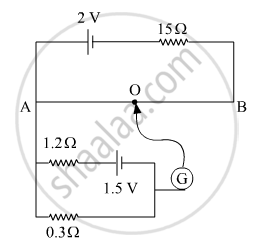
Solution
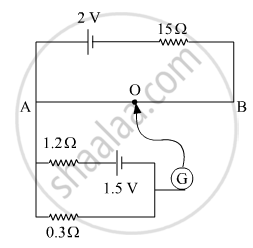
Potential space gradient = `V_(AB)/I`
Using Kirchhoff’s rules,
`2=Ixx15+Ixx10=Ixx25=>I=2/25=0.08 A=>V_(AB)=Ixx10=0.8 =V`
`therefore " Potential space gradient "=(0.8/1)=0.8V/m`
Balance length = l
Potential difference across the balance length = Potential gradient × l
Potential difference across AO = 0.3 × 1 = 0.3 V
`therefore 0.3 V="Potential space gradient" xxI=>0.3=0.8xxI=>I=0.375 m=37.5`
RELATED QUESTIONS
In a series LCR circuit, what is the phase difference between VL and VC where VL is the potential difference across the inductor and V c is the potential difference across the capacitor?
The emf of a cell is always greater than its terminal voltage. Why? Give reason.
Find the potential difference Va – Vb in the circuits shown in the figure.
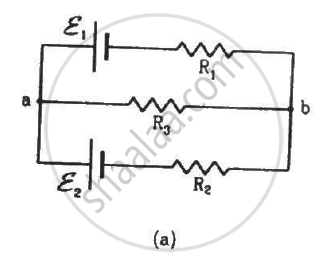
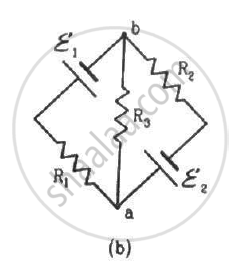
In the circuit shown in the figure, ε1 = 3 V, ε2 = 2 V, εa = 1 V and r1 = r2 = r3 = 1Ω. Find the potential difference between the points A and B and the current through each branch.

A potential difference of 220 V is maintained across 12000 Ω rheostat. Then voltmeter V has a resistance of 6000 Ω and point C is at one fourth the distance from a to b. Then the reading of voltmeter is ______.
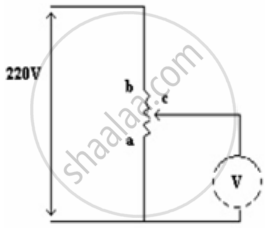
In the circuit in figure the potential difference across P and Q will be nearest to
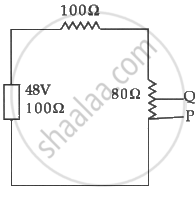
Two sources of equal e.m.f are connected to an external resistance R in series. The internal resistance of the two sources are R1 and R2 (R2 > R1) If the potential difference across the source having internal. resistance R2 is zero, then ______.
The terminal potential difference of a cell is greater than its e.m.f when it is ______
